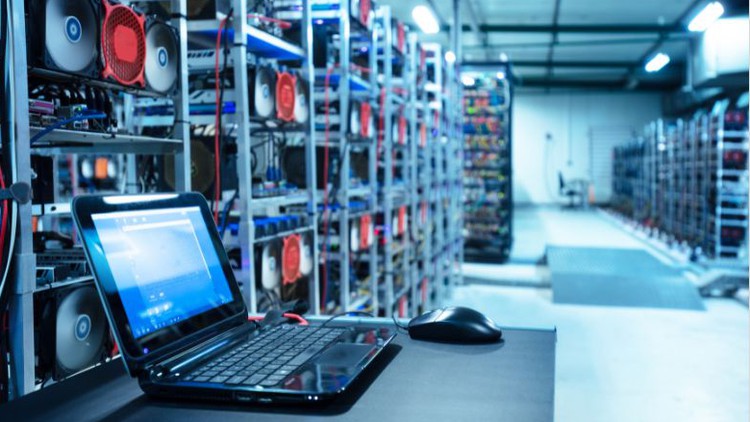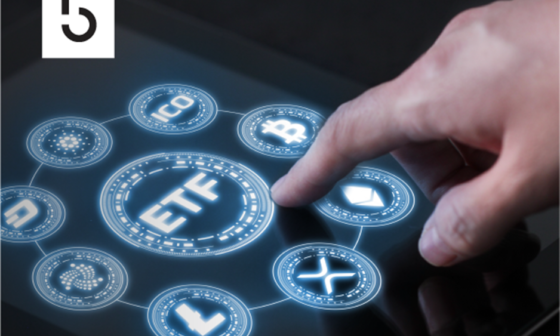Welcome to the intricate world of Bitcoin mining, where digital innovation meets decentralized finance. In this comprehensive guide, we embark on a journey to demystify the question that echoes through the cryptocurrency landscape: “How are Bitcoins mined?”
In the subsequent sections, we’ll explore the essential components of mining Bitcoin, dissecting the role of miners, the proof-of-work process, and the rewards that fuel the ecosystem.
We’ll also address the environmental considerations that have become a focal point of discussion within the crypto community, showcasing the ongoing efforts to align Bitcoin transactions with sustainability goals.
Whether you’re a seasoned crypto enthusiast or a curious newcomer, by the end of this exploration, you’ll have a profound understanding of How Bitcoin Mining Works.
Understanding Bitcoin Mining
Bitcoin mining, a cornerstone of the cryptocurrency landscape, is a captivating process that powers the decentralized network underpinning the digital currency.
In this section, we’ll delve into the intricate workings of Bitcoin mining, exploring its definition, historical significance, and the key components that make it a linchpin of the entire blockchain ecosystem.
Definition of Bitcoin Mining
In its most basic form, mining bitcoins is the process of creating new ones and validating and adding them to the blockchain. This process involves a network of participants, known as miners, who use specialized hardware to solve complex mathematical puzzles, ensuring the security and legitimacy of transactions.
Bitcoin’s blockchain is a decentralized and distributed ledger that records all transactions made with the cryptocurrency.
Historical Context
To truly grasp the significance of Bitcoin mining, one must delve into its historical roots. The concept was introduced by Satoshi Nakamoto in the Bitcoin whitepaper in 2008 as a fundamental mechanism to secure the decentralized cryptocurrency. The aim was to create a system that operates without the need for a central authority, fostering trust and transparency in financial transactions.
In this pivotal section, we embark on a detailed exploration of the intricate processes that define How Bitcoin Mining Works. From the fundamental components to the nuanced procedures, this section serves as your comprehensive guide to understanding the mechanics of Bitcoin mining.

Key Components of Bitcoin Mining Process
Mining Hardware
Central to Bitcoin mining is the use of sophisticated hardware, specifically designed for the intense computational tasks involved. Application-Specific Integrated Circuit (ASIC) machines dominate this landscape, providing the processing power necessary to compete in the mining race.
The Role of Miners
Miners, the backbone of the Bitcoin network, serve as validators and consensus builders. Their primary function is to solve cryptographic puzzles, known as proof-of-work, to validate transactions. This competitive process ensures that only valid transactions are added to the blockchain.
Bitcoin Transactions and Blocks
The blockchain, a chain of blocks, acts as a public ledger containing all validated transactions. Miners group these transactions into blocks, linking them securely through cryptographic hashes. This sequential structure forms the basis of the transparent and unalterable nature of the Bitcoin ledger.
Decoding Proof-of-Work
Solving Complex Mathematical Problems
At the heart of Bitcoin mining, the concept of proof-of-work (PoW) serves as the bedrock for ensuring the security and integrity of transactions within the blockchain. This section delves into the intricacies of how miners decode PoW, shedding light on the competitive and resource-intensive nature of this cryptographic puzzle.
What is Proof-of-Work?
Proof-of-Work is a consensus algorithm designed to prevent malicious actors from tampering with the blockchain. It requires participants, or miners, to solve complex mathematical problems as a prerequisite for validating transactions and adding a new block to the blockchain.
The Mining Race: Solving Puzzles for Validation
Miners engage in a perpetual race to solve these intricate puzzles. The challenge lies in finding a specific numerical value, known as a nonce, that, when combined with the data from the block and run through a cryptographic hash function, produces a hash that meets certain criteria. This criterion often involves having a hash with a specified number of leading zeros.
Competitiveness and Security
The competitive nature of PoW ensures that miners must expend computational power to solve these puzzles quickly. The first miner to successfully find the correct nonce gets the privilege of adding the next block to the blockchain and is rewarded with newly created bitcoins.
The Significance of Difficulty
The difficulty of these puzzles is dynamic and adjusts approximately every 14 days. This adjustment is crucial in maintaining the average time it takes to mine a new block at around 10 minutes. If more miners join the network, making the overall computational power higher, the difficulty increases. Conversely, if miners leave, the difficulty decreases.
Securing the Blockchain
Decoding Proof-of-Work acts as a gatekeeper, making it extremely challenging and resource-intensive for any single entity to control the blockchain. The decentralized nature of this process enhances security, as an attacker would need more computational power than the rest of the network combined to manipulate the blockchain — a practically insurmountable feat.
The Energy Debate
While Proof-of-Work is effective in securing the network, it has faced criticism for its energy consumption. The energy-intensive nature of solving these mathematical problems has led to discussions about the environmental impact of Bitcoin mining. This has prompted exploration into alternative consensus mechanisms, such as Proof-of-Stake, which aim to achieve network security with reduced energy consumption.
Mining Pools
Collaborative Mining Efforts
Recognizing the challenges of solo mining, many more miners opt to join forces in mining pools. These collaborative efforts allow participants to combine their computing power, increasing the likelihood of successfully mining a block. Rewards are then distributed proportionally among pool members.
Rewards and Incentives
Bitcoin Generation and Distribution
Mining serves a dual purpose of confirming transactions and generating new bitcoins. Miners, upon successfully adding a block to the blockchain, are rewarded with freshly minted bitcoins. This controlled issuance, along with transaction fees, forms the economic incentive for miners.
Environmental Impact
Addressing Sustainability Concerns
Bitcoin mining is renowned for its energy-intensive nature. The proof-of-work consensus mechanism, requiring miners to solve complex mathematical problems, demands substantial computational power.
As a result, mining operations globally consume a significant amount of electricity. Critics argue that this energy consumption is not only unsustainable but also contributes to carbon emissions. Even fossil fuels can be used for Bitcoin mining, but it has raised environmental concerns due to the carbon emissions associated with burning fossil fuels.
In addition to relying on renewable energy, there are ongoing efforts to develop more energy-efficient mining hardware.
Balancing the decentralized and secure aspects of Bitcoin Blockchain with environmental sustainability remains a complex challenge, and ongoing innovations and regulatory developments are expected to shape the industry’s approach to these concerns in the future.
How to Start Bitcoin Mining- Steps to Begin Bitcoin Mining
Before diving in, grasp the fundamental concepts of Bitcoin mining. Familiarize yourself with terms like blockchain, proof-of-work, and cryptocurrency mining. A solid understanding of the underlying technology will empower you in this mining venture.
Get the Right Hardware:
Selecting the appropriate mining hardware is crucial. In the early days, individuals could mine using regular computers, but today’s competitive landscape demands specialized equipment.
Consider investing in an ASIC (Application-Specific Integrated Circuit) miner, as it offers superior processing power tailored for mining Bitcoin.
Choose a Mining Software:
Once you have your hardware, you’ll need mining software. There are various options available, each with its features and compatibility. Popular choices include CGMiner, BFGMiner, and EasyMiner. Ensure compatibility with your chosen mining rig and operating system.
Join a Mining Pool:
Solo mining, while possible, is often challenging due to the increased difficulty in solving complex mathematical problems. Joining a mining farm allows you to combine your computational power with others, increasing the likelihood of successfully mining a block. Popular mining pools include F2Pool, Slush Pool, and Antpool.
Create a Bitcoin Wallet:
To receive your mining rewards, you need a Bitcoin wallet. Choose a secure and reliable wallet that aligns with your preferences – hardware wallets for enhanced security or software wallets for convenience. Your wallet address is where mined bitcoins will be sent.
Configure Your Mining Setup:
Follow the instructions provided by your chosen mining software to configure your mining setup. Input your wallet address, select the mining rig, and adjust any other relevant settings. Ensure your hardware is connected, and the mining software is running smoothly.
Start Mining:
With everything set up, initiate the mining process. Your hardware will start solving complex mathematical puzzles to validate transactions. If you’re part of a mining pool, any rewards earned will be distributed based on your contributed computational power.
Monitor and Optimize:
Regularly monitor your mining operation’s performance. Keep an eye on factors like hash rate, temperature, and power consumption. Optimize your setup by staying informed about software updates, hardware improvements, and changes in mining pool policies.
Understand the Costs:
Bitcoin mining involves operational costs, including electricity and maintenance. Be aware of these expenses and factor them into your mining profitability calculations. It’s essential to ensure that your mining venture remains financially viable.
Stay Informed and Adapt:
The landscape of Bitcoin mining is dynamic, with technological advancements and market fluctuations. Stay informed about industry trends, regulatory developments, and emerging technologies. Adapt your mining strategy accordingly to stay competitive and maximize your returns.
What is Bitcoin Halving?
Bitcoin halving is a programmed event that occurs approximately every four years, reducing the mining reward miners receive for validating transactions by half; this impacts mining by decreasing the rate at which new bitcoins are generated, influencing miner incentives, and potentially affecting the overall economics of Bitcoin mining.
A total of 21 million bitcoins will ever be minted, and it is estimated that the last bitcoin will be mined around the year 2140, following the gradual reduction in block rewards through the process of halving approximately every four years.
GPU Mining
GPU mining, utilizing Graphics Processing Units, is a method for validating transactions on certain cryptocurrencies like Ethereum. Offering versatility and accessibility, GPUs perform complex calculations and resist ASIC dominance.
Any crypto miners can use popular GPUs, including NVIDIA GeForce and AMD Radeon, to contribute to the decentralized nature of mining. However, challenges such as energy consumption and algorithm change impact its dynamics, making GPU mining a dynamic and intriguing facet of the cryptocurrency landscape.
ASIC Mining
ASIC mining involves specialized hardware and application-specific Integrated Circuits, designed for the efficient mining of specific cryptocurrencies. With advantages such as high hash rates and energy efficiency, ASICs excel in particular algorithms, enhancing mining performance.
However, concerns about centralization and adaptability challenges arise due to their specialization. Popular ASIC miners, like those from Bitmain’s Antminer series, play a significant role in cryptocurrency mining, but their impact is tempered by ongoing technological and regulatory developments.
Computing power is crucial for other miners who compete to solve intricate mathematical puzzles to validate transactions and add new blocks to the blockchain. The more computing power, the more likely a miner is to successfully mine a block and earn rewards.
Challenges in Bitcoin Mining
Technological and Regulatory Challenges
Despite its prominence, Bitcoin mining faces challenges. Technological advancements and evolving regulations shape the landscape, impacting the efficiency and profitability of mining operations.
Bitcoin miners face challenges such as rising electricity consumption, regulatory uncertainties, and the constant need for expensive mining hardware upgrades, impacting the profitability and sustainability of their operations.
Mining difficulty increases in the Bitcoin network as a result of the protocol’s self-adjusting mechanism. Approximately every 14 days (2016 blocks), the system evaluates how quickly blocks are being mined.
Security Considerations
Protecting Against Cyber Threats
In terms of security, Bitcoin miners confront challenges related to potential 51% attacks, vulnerability to malicious Bitcoin mining operations, and the ongoing need for robust cybersecurity measures to safeguard the decentralized network from external threats.
Future Trends in Bitcoin Mining
Innovations and Evolving Technologies
In the world of Bitcoin Network, mining is dynamic. Innovations like more energy-efficient hardware, improved consensus algorithms, and increased adoption of sustainable practices are shaping its future.
FAQs
How long does it take to mine one Bitcoin?
Mining one Bitcoin can vary, but on average, it takes around 10 minutes to mine a block. However, the time to mine a full new Bitcoin depends on factors like hash rate and network difficulty.
Can I mine Bitcoin with my regular computer?
In the early days, mining with a regular computer was feasible. Today, with the increased difficulty and specialized hardware, mining profitability requires powerful ASIC machines.
What is the energy consumption of Bitcoin mining?
Bitcoin mining does consume energy, but advancements in technology and a shift towards renewable energy sources aim to mitigate environmental concerns associated with mining.
Is Bitcoin mining legal?
In most jurisdictions, Bitcoin mining is legal. However, it’s crucial to comply with local regulations and ensure that the energy consumption associated with mining aligns with sustainability goals.
Is Bitcoin mining profitable?
Bitcoin mining profitability depends on factors such as hardware efficiency, electricity costs, price of Bitcoin, mining difficulty, transaction fees, power grid, and ongoing maintenance expenses.
Conclusion
Recap of Bitcoin Mining and Its Future
In conclusion, delving into unveils the intricate processes that underpin the decentralized nature of the cryptocurrency. From its historical roots to the latest technological trends, Bitcoin mining continues to shape the future of digital finance.




